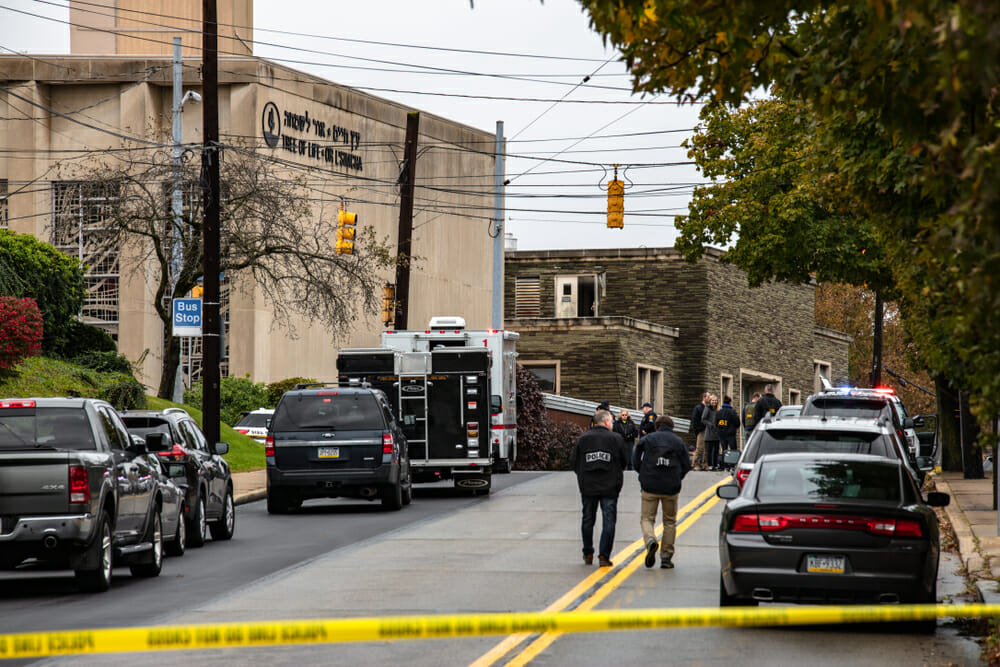
Criminal Justice and Rehabilitation in Pennsylvania
Each state creates and utilizes a criminal justice system to provide public safety to its residents. This article briefly examines Pennsylvania’s criminal justice system, beginning with the Pennsylvania prison population.
Prison Population Statistics in Pennsylvania
A geographically large and heavily populated state, Pennsylvania’s criminal justice system may initially seem complex. But understanding Pennsylvania criminal justice can be achieved by simply answering the following questions:
- What criminal rehabilitation programs are used in Pennsylvania?
- Are there alternatives to incarceration in Pennsylvania?
- How many people are incarcerated in Pennsylvania?
- What are the biggest prisons in Pennsylvania?
- What is Pennsylvania’s recidivism rate?
- What is Pennsylvania’s crime rate?
According to the Bureau of Justice Statistics, Pennsylvania has the 26th highest incarceration rate, just behind South Carolina but just ahead of Kansas. Pennsylvania imprisons about 287 people for every 100,000 living in the state. For comparison, the overall U.S. incarceration rate is about 350 per 100,000 residents.1
How many people are behind bars in Pennsylvania? According to the National Institute of Corrections, Pennsylvania has 73 jails in 67 counties, with about 31,790 individuals held in them at any given time.2 These individuals are usually in pretrial detention or are serving short jail stints for minor offenses. Pennsylvania also operates 24 state prisons which combined hold about 45,702 prisoners. The state also operates a community corrections population, including 172,052 individuals under probation and 105,938 individuals under parole. PA-operated facilities have a staff of about 15,000 employees and a budget of $2,628,500,000. According to the Urban Institute, the Pennsylvania Department of Corrections is the state’s seventh costliest budget item, costing PA residents about $350 per year.3

The State Correctional Institution – Greene.
Image courtesy of www.cor.pa.gov
Pennsylvania has begun to contract with private prisons, with 511 prisoners held by private institutions as of 2019. While this figure only represents about 1.1% of all incarcerated persons in Pennsylvania, the state was not contracting with private prisons at the turn of the century, suggesting a potential shift towards privatization of prisons in the state.
The State Correctional Institution – Greene is the largest prison in the Keystone State, with a capacity for 1,853 prisoners. Opened in November 1993 and housing only male inmates, the State Correctional Institution – Greene houses most of the state’s male capital case inmates.4
Pennsylvania Crime Rates
One of the most important aspects of a state’s criminal justice system is the state’s crime rate and whether or not the state’s approach to criminal justice is succeeding in bringing the crime rate down. Pennsylvania keeps close track of its crime rate, analyzing year-over-year crime data to determine whether crime is going up or coming down in the state. According to the most recent data, Pennsylvania recorded:5
- 987 murders in 2022, 1,033 murders in 2021
- 91 manslaughters in 2022, 83 manslaughters in 2021
- 3,606 rapes in 2022, 3,924 rapes in 2021
- 8,775 robberies in 2022, 7,813 robberies in 2021
- 21,772 aggravated assaults in 2022, 23,302 aggravated assaults in 2021
- 77,773 ‘other’ assaults in 2022, 76,755 ‘other’ assaults in 2021
- 18,843 burglaries in 2022, 18,154 burglaries in 2021
- 148,653 larcenies in 2022, 124,275 larcenies in 2021
- 21,042 cases of motor vehicle theft in 2022, 16,666 such cases in 2021
- 1,406 arson cases in 2022, 1,711 such cases in 2021
- 45 cases of human trafficking in 2022, 67 such cases in 2021
Altogether, Pennsylvania recorded 302,993 offenses in 2022 and 273,783 offenses in 2021, suggesting crime is trending upwards in the Keystone State.
Recidivism Rates in Pennsylvania
After crime, perhaps the next most important metric to examine when studying the efficacy of a state’s criminal justice system is the state’s recidivism. According to a state report, “Recidivism rates remained relatively stable over the last two decades, with a slight increase in each of the main measures (re-arrest, re-incarceration, overall recidivism) since 2000. The most recent overall recidivism rate is 64.7% within three years of release.” Despite continuous efforts to reduce recidivism, almost two-thirds of individuals who go through the correctional system in Pennsylvania still end up reoffending and becoming incarcerated again after their initial release from prison. This has to change.6

Photo by Brendt A Petersen/Shutterstock.com
The State of Pennsylvania spends about $42,727 per prisoner per year, a higher than average spending per prisoner. That suggests the problem is not one of sufficient funds to incarcerate and attempt to reform offenders. Rather, the problem is one of the efficacy of Pennsylvania’s criminal reform programs.
Three Critical Criminal Rehabilitation Programs Pennsylvania Needs
Criminal reform in Pennsylvania is an important issue, as the state spends $2,628,500,000 per year on its Department of Corrections, only to have 64.7% of its inmate become re-incarcerated following their release from prison.
Three areas where Pennsylvania could significantly improve its criminal reform modalities include the following:
- Addiction treatment programs for offenders who misuse drugs and alcohol
- Job skills programs to help offenders learn valuable trades for post-incarceration
- Programs that teach life skills and coping strategies to help offenders live crime-free lives post-incarceration
Alternatives to Incarceration in Pennsylvania

To its credit, Pennsylvania’s criminal justice policymakers are moving towards a model where alternatives to incarceration in Pennsylvania are used whenever possible. Quoting the District Attorney’s Office, “Accountability comes in different forms. In some cases a conviction and sentencing is appropriate. In other cases, treatment, community service, and other requirements are the best option for rehabilitation and public safety. Certain offenses can be better prevented by addressing the underlying issues of defendants. Diversion, an alternative to traditional prosecution, may offer a more efficient and effective approach to stopping recidivism and supporting stronger households and communities.” Currently, alternatives to incarceration in Pennsylvania include:7
- Probation
- House arrest
- Community service
- Work release programs
- Substance abuse programs
Looking to the future, the Keystone State may reduce its high recidivism rate and lower its crime rate by implementing more educational programs in prisons in Pennsylvania, adding evidence-based reform programs, and creating alternatives to incarceration for nonviolent offenders. Such policies should be advocated for.
Sources Cited:
- BJS. “Prisoners in 2020 – Statistical Tables.” Bureau of Justice Statistics, 2021. bjs.ojp.gov
- NIC. “Pennsylvania 2019.” National Institute of Corrections, 2019. nicic.gov
- UrbanInstitute. “Project Pennsylvania.” Urban Institute, 2022. urban.org
- PDOC. “State Prisons.” Pennsylvania Department of Corrections, 2022. cor.pa.gov
- PSP. “Crime in Pennsylvania.” Pennsylvania State Police, 2022. ucr.pa.gov
- PDOC. “Pennsylvania Recidivism 2022 Report.” Pennsylvania Department of Corrections, 2022. cor.pa.gov
- PDAO. “Alternatives to Prosecution & Incarceration.” Pennsylvania District Attorney’s Office, 2022. phillyda.org
Related Articles
What Is the Scope of Private Prisons in the U.S.?
In 2001, the Federal Bureau of Justice Assistance authored a report analyzing then-emergent issues regarding private prisons in the United States. According to the authors...
Read more >>
Diversion Programs Work to Curb Drug Use and Crime
Drug use is both habit-forming and illegal, putting people who cannot stop using drugs in the precarious position of being criminalized for having an addiction....
Read more >>
Learning Study Skills to Help My Son
The Learning Skills for Life Course has helped me more than I ever expected if I’m being honest. I am currently doing my best to...
Read more >>
Criminon New York Offers Inmates New Hope
“I was introduced to ‘The Way To Happiness Course’ sometime in 2004. It was exciting from the beginning because I had to read, study, and...
Read more >>





